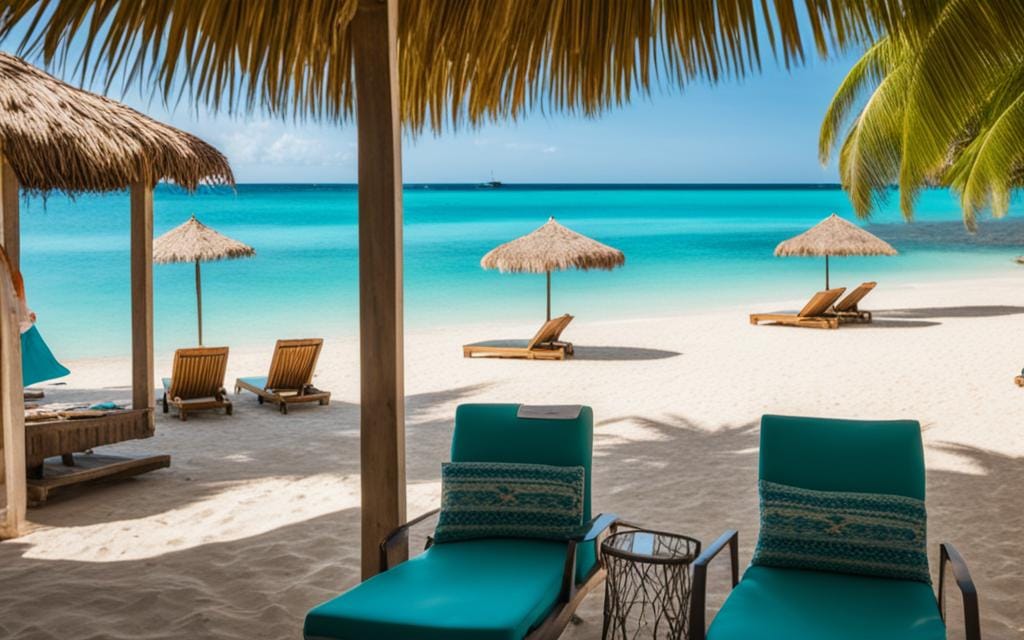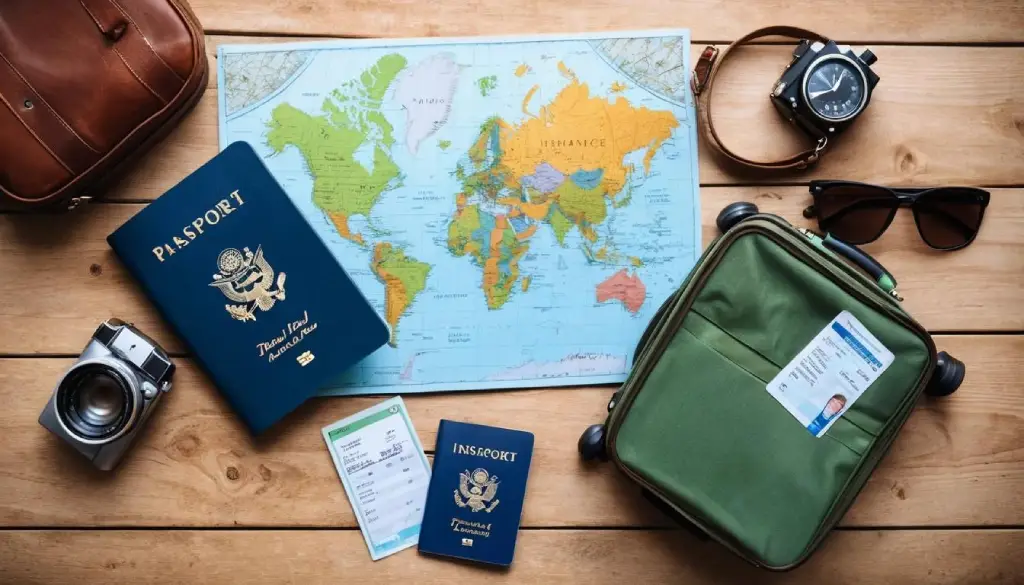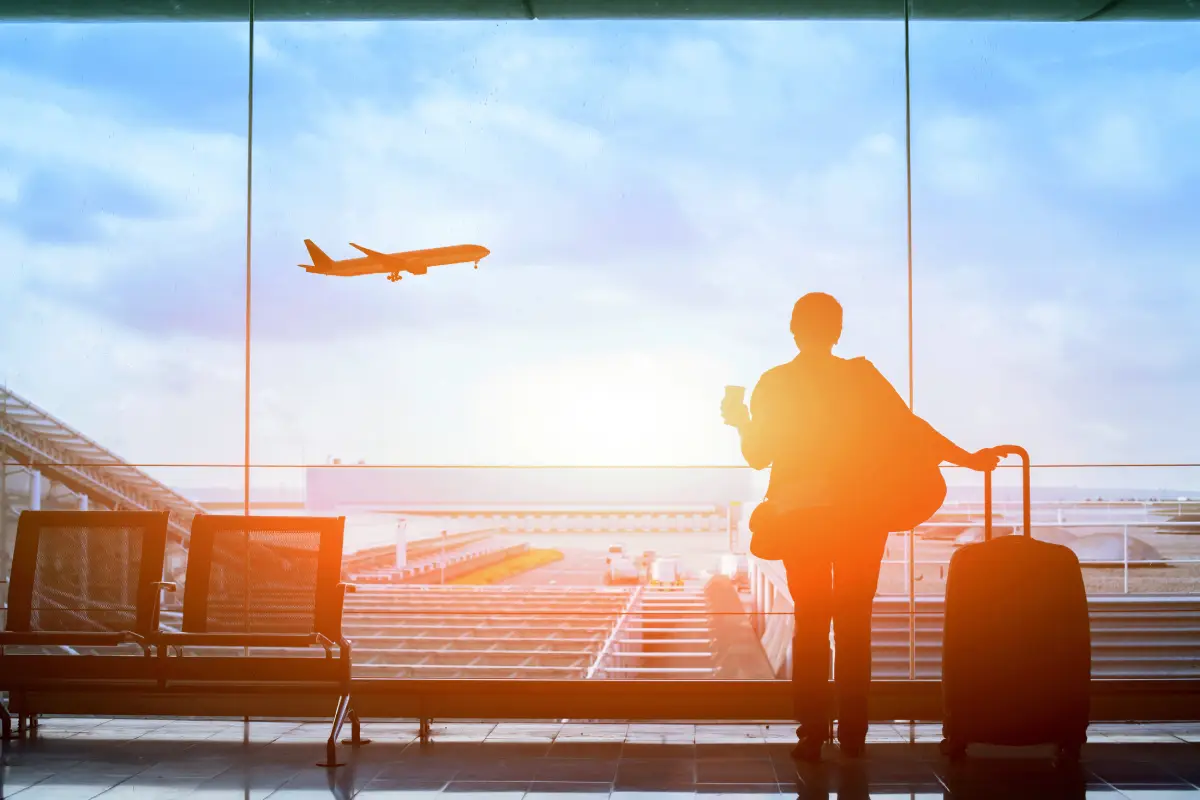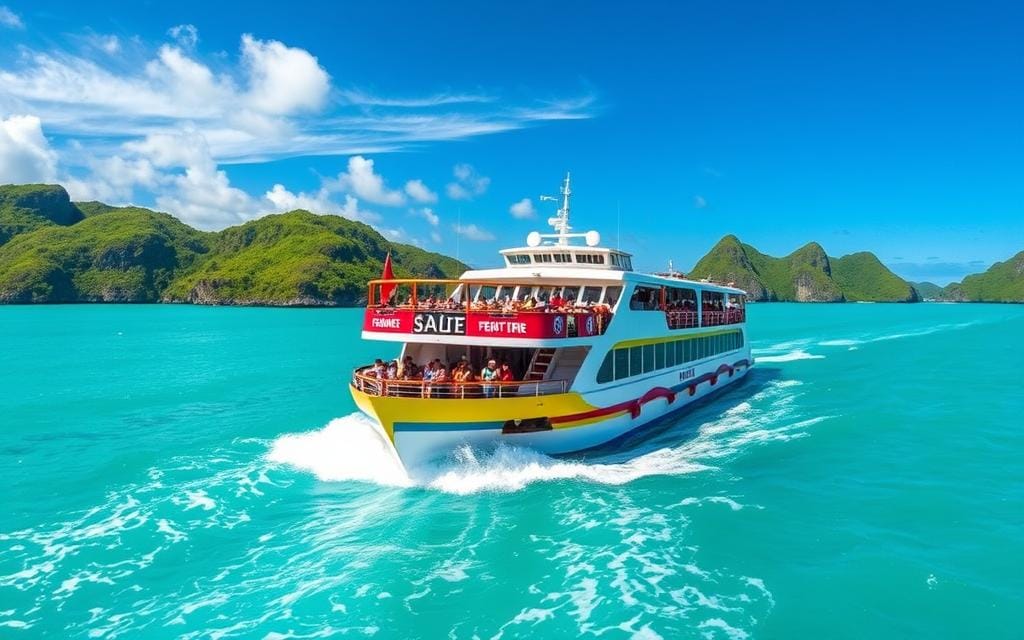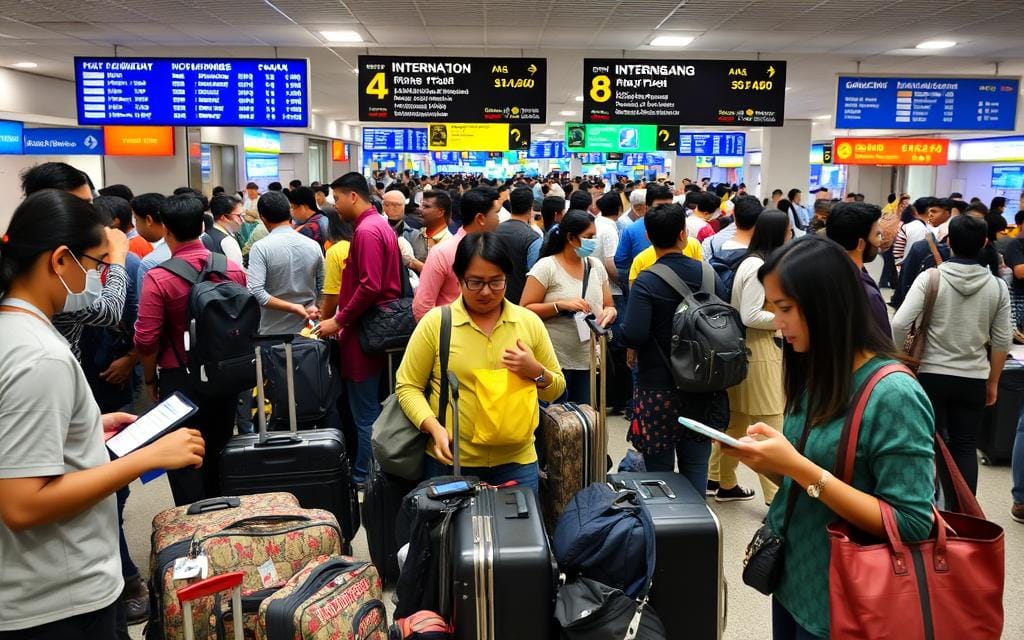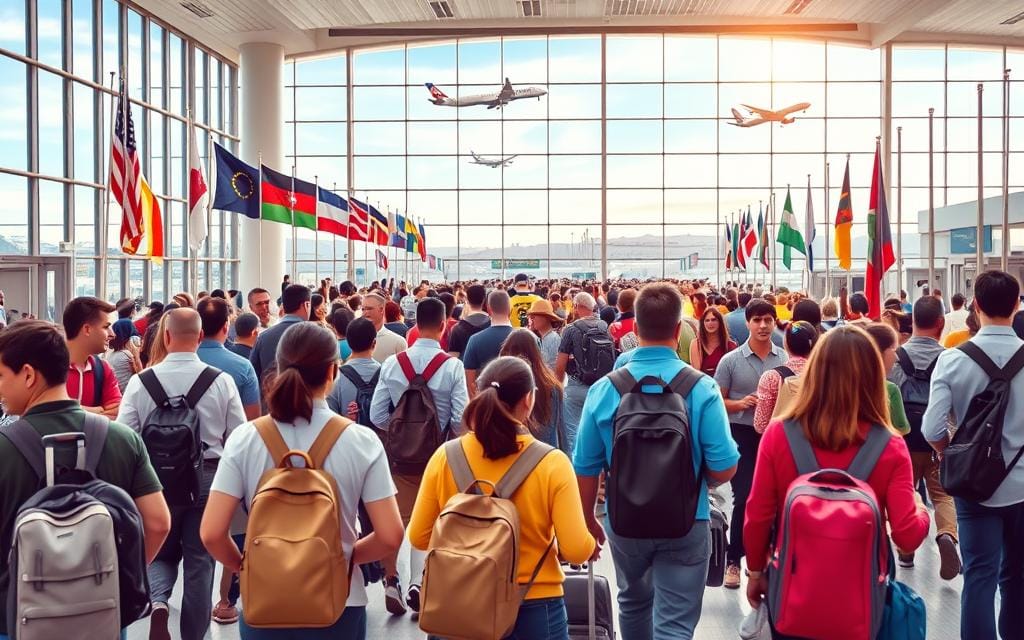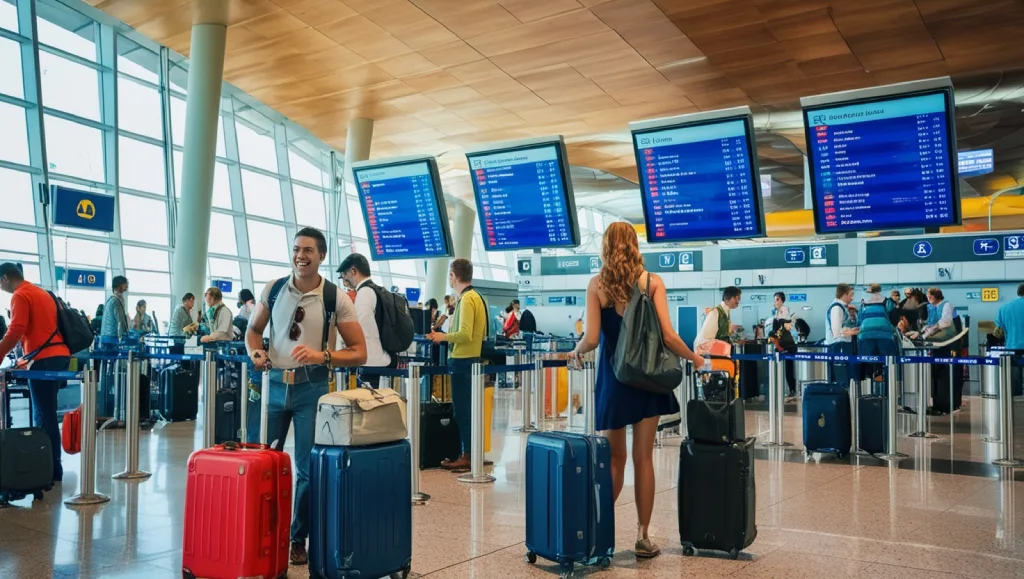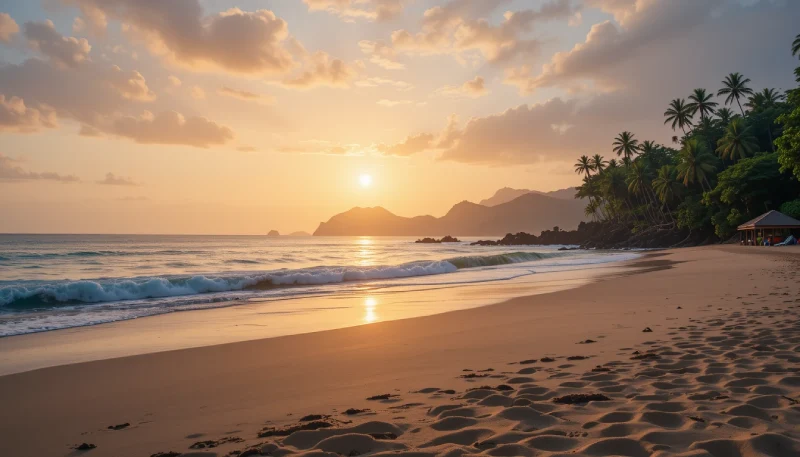Is It Safe to Travel to Dominican Republic Today? I love exploring the Dominican Republic. Its culture and scenery are truly captivating. Yet, recent alerts about crime and safety make me question: Is it okay to go there now12?
This country is a top tourist choice, famous for its gorgeous beaches and history. But, the U.S. Department of State’s latest warning advises travelers to “be more cautious due to crime.”1
The advisory highlights various violent crimes like robbery and murder across the country1. Even with tourist police and a 911 system, the presence of weapons and drugs makes crime rates high. The overwhelmed justice system is also part of the problem1.
This situation is concerning, but I’m staying cautious. In planning my visit, I’ll keep a low profile and follow local advice. I believe with the right safety measures, I can enjoy the Dominican Republic’s beauty safely12.
Table of Contents
ToggleDominican Republic Travel Advisory
The U.S. Department of State warns about crime in the Dominican Republic. It tells U.S. citizens to be extra careful3. The country faces issues like armed robbery, homicide, and sexual assault4. To stay safe, travelers should avoid showing off their valuables. They must also listen to local safety tips from resorts and tour guides3.
Country Summary
The Dominican Republic is in the Caribbean, sharing an island with Haiti. It’s well-loved for its stunning beaches, lively culture, and deep history3. Yet, visitors need to watch out for safety risks. Taking the right steps can make your trip both safe and fun.
Safety Precautions
- Sign up for the Smart Traveler Enrollment Program (STEP) for safety alerts3.
- Don’t flaunt wealth or carry too much cash to avoid theft4.
- Listen to advice from your resort or tour guides about local safety3.
- Very careful with public transport or walking alone, especially at night4.
- If buying property, talk with a good lawyer to avoid title issues4.
Understanding the risks and taking safety steps can make your trip to the Dominican Republic better345.
Crime in Dominican Republic
In 2022, around eight and a half million people visited the Dominican Republic. This made it the top choice in the Caribbean and fifth in the Americas6. However, crime is a big worry for those visiting. Travel advisories say it’s moderately safe, but there’s lots of crime. This includes theft, violence, scams, and harassing women6.
Petty Crimes
Petty crimes like pickpocketing are common in the Dominican Republic. They happen a lot in tourist spots, airports, and on buses6. To lower the risk, travelers should not show off valuable items. This helps avoid becoming a target6.
Assault and Violent Crimes
More serious crimes can be found here, too. For instance, armed robbery and assault happen more in the big cities and at night6. It’s best to not walk alone in quiet places after dark. Always use recognized taxi services, especially at the airport6.
The Dominican Republic has a crime index of 71.34, which is high6. Certain crimes, like theft and corruption, are very common. This includes petty theft and harassment of women6.
Buses are not considered safe, but taxis are trusted6. The country has about 32,000 police officers. They also have a special tourist police. Recently, they got more funding and new vehicles to help keep visitors safe6.
Crime can happen anywhere, but it’s more likely in the cities and during holidays. Women are often targets for harassment and scams. Be extra careful of what you eat or drink6.
It’s wise to avoid certain areas in the Dominican Republic. Stay alert, avoid being alone in remote places, and be careful with dating apps. Importantly, if faced with robbery, it’s best not to fight back6.
Scams and Fraud to Be Aware Of
Traveling to the Dominican Republic comes with the risk of encountering scams. Criminals might pose as police and ask for money for fake violations7. Always ask for a real traffic ticket in these cases. Don’t pay any on-the-spot fines. Also, foreign visitors could be targeted by rogue lawyers looking for money7.
Be careful about credit card and ATM fraud in the Dominican Republic. Always hide your PIN when using your card. This is a good way to stop others from getting your card info7. Some tourists have faced armed robbery when leaving the Las Americas international airport. They’re robbed by those pretending to be police, or in taxis or private cars7.
Watch out for a scam with pet owners who have monkeys or parrots. They take your photo and then demand high prices, like $100, for them8. Also, be wary of airport taxis that might overcharge. They could try to charge $20 for each person, meaning $140 for a group of seven8.
If you need a COVID-19 test, be cautious. There could be a scam where you’re asked for more money for a test at the airport. This happens if your test was taken over 24 hours before your flight8. Local vendors might also talk you into buying more than you planned. One tourist spent around $250 on souvenirs because of this8.
To stay safe from these scams, be careful with local services and in any financial transactions. Always cover your PIN at ATMs and don’t give money to those who say they’re in authority7. With caution and planning, your trip to the Dominican Republic can be enjoyable and secure9.
| Scam Type | Description | Estimated Cost |
|---|---|---|
| Police Impersonation | Criminals posing as police officers demanding payment of fines for made-up offenses | Varies |
| Rogue Lawyers | Lawyers attempting to extort money from foreigners who have been detained | Varies |
| Credit Card/ATM Fraud | Unauthorized access to credit card information and ATM skimming | Varies |
| Airport Robbery | Criminals impersonating police or using taxis/private vehicles to rob tourists | Varies |
| Pet Photo Scam | Pet owners demanding exorbitant fees for photos taken with tourists | Around $100 |
| Airport Taxi Overcharging | Taxi services charging significantly higher rates for transportation from the airport | Up to $140 for a group of 7 |
| COVID-19 Test Scam | Requiring travelers to pay extra for an emergency test at the airport if taken more than 24 hours before departure | Varies |
| Vendor Persuasion | Local vendors convincing tourists to make unplanned purchases of souvenirs and other goods | Around $250 |
Knowing about these scams helps you protect yourself in the Dominican Republic. With preparation, you can have a great and safe trip789.
Women’s Safety Concerns
Traveling to the Dominican Republic as a woman needs special care. There have been cases of harassment and assault, even at famous beach spots10. Women should be careful with people they don’t know well. Also, avoid being alone at night or using public transport10.
Sexual Assault Risks
Dealing with sexual assault is a big issue in the Dominican Republic for women. Any solo female traveler needs to be keen and report any problems to authorities or the nearest Canadian service10. It’s good to know which parts of town are safe. Also, check the safety of your hotel on sites like TripAdvisor10.
There are apps that can make travels safer for women. App options include GeoSure, TripWhistle Global, bSafe, Noonlight, and FoneTrac10. These apps have features for calling for help, sharing locations, and more. It’s also wise to join the State Department’s STEP for travel safety tips and help in emergencies10.
In the end, aware female travelers can greatly enjoy the Dominican Republic while staying safe. Being prepared, using helpful tools, and staying updated are key. This approach helps to reduce any risks10.
Is It Safe to Travel to Dominican Republic Today?
The Dominican Republic’s safety situation is challenging for travelers. The U.S. State Department keeps its travel alert at Level 2 since June 6, 202311. It warns visitors to be more careful because of the country’s crime levels, including violent crime12.
The country is working on making things safer for tourists. However, drug trafficking, poor law enforcement, and easy weapon access are still problems11. To stay safe, travelers must keep an eye out, avoid showing wealth, and listen to advice from their hotels or tours11.
Haiti, next to the Dominican Republic’s west, faces a severe political and security crisis11. The two countries’ border is shut, with extra security11. This crisis could affect the Dominican Republic’s safety, making things more complex for visitors.
Deciding to travel there should involve careful thought about the current safety alerts and personal risk tolerance111213. By staying updated and taking safety steps, travelers can still have a great time in the Dominican Republic.
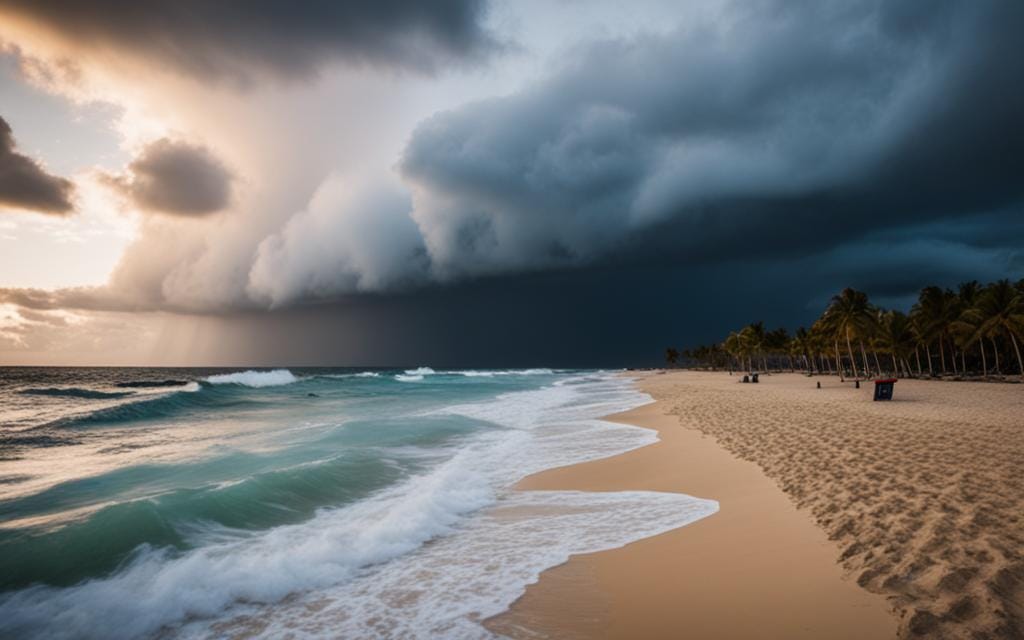
Protests, Strikes, and Civil Unrest
In the Dominican Republic, protests and labor strikes happen from time to time14. They mainly take place in Santo Domingo, the capital, and Higuey close to Punta Cana14. These events have usually been calm and haven’t affected tourist spots. But, visitors should steer clear of places where big crowds or protests are happening. They should also keep up with local news. This helps in avoiding any trouble that could mess up their travel plans14.
Lately, the country has seen some unrest due to political issues. These include economic hardships, corruption, and government policies14. Such events might lead to closed roads and travel problems for tourists14.
It’s crucial for travelers to be in the know and careful when planning their visits. Checking travel warnings from the U.S. Department of State is a good idea. Doing this before and during your trip to the Dominican Republic can help you stay safe14.
If a protest happens near you, the best bet is to find another way and steer clear. Also, keep an eye on local media and social platforms for any updates that could change your plans14.
By staying alert and careful, you can have a great and safe time in the Dominican Republic. Even with political unrest or strikes, a good trip is still possible14.
Road Safety and Driving Conditions
Driving in the Dominican Republic is tough for many. The country’s roads often see a lot of accidents. Because of this, it’s considered one of the most dangerous places to drive15. Speed limits might be as low as 25 mph in cities and 60 mph on the countryside. But, many drivers don’t follow these speed rules15. Accidents with big vehicles like buses can be very bad. They mostly lead to serious injuries or even deaths15.
Border Areas with Haiti
The border area with Haiti can be dangerous. There are often fights and other violent events. Experts say it’s best to stay away from this part of the country15. As you leave the big cities and head into the countryside, roads get worse. You’ll find more potholes and less street lights16.
Driving around here means you really need to pay attention15. You’ll see a lot of motorcycles and scooters, and their riders don’t always drive safely. They can be a big danger to others15. Also, walking pedestrians are often at risk. Every year, many people die while trying to cross the street wherever they please15.
The country has been working on its road system, adding new highways16. But in the rural areas, road conditions can still be hard. This is especially true in the rainy season. Potholes and low visibility can make it tough to travel16. Keep an eye out for animals crossing, too16.
| Road Safety Concerns in the Dominican Republic | Statistics |
|---|---|
| Risk of Obstructive Sleep Apnea (OSA) among heavy vehicle drivers | 13% of heavy vehicle drivers are at risk of developing OSA, which can lead to drowsiness and increased accident risk17. |
| Obesity as a key risk factor for OSA | 87.5% of drivers at risk of OSA were found to be obese17. |
| Cell phone usage while driving | 50% of drivers admitted to using their cell phones while driving, with calls and voice notes being the most common reasons for distraction17. |
| Global ranking in road accidents | The Dominican Republic ranks fourth globally in road accidents, with over 100,000 injuries and nearly three thousand deaths recorded by the end of 202217. |
| Most common type of accidents | Motorcycle accidents were identified as the most common type of accidents in the Dominican Republic17. |
| Age group most affected by road accidents | The youth population, specifically those between 15 and 26 years old, are most affected by road accidents17. |
To wrap it up, driving in the Dominican Republic can be interesting yet risky. Travelers must be very careful and keep in mind the many dangers on the road151617.
Public Transportation Options
When in the Dominican Republic, there are many ways to travel. But, not all are equally safe18. The metro in Santo Domingo has two lines. It’s open every day from 6 AM to 10:30 PM. A roundtrip ride costs RD$40 and you need a metro card for RD$15.
Local taxis are easy to find in big cities. Their prices are fixed by taxi groups18. Uber is also available in Santo Domingo, Santiago, and Puerto Plata. It’s known for being both safe and budget-friendly.
18 For longer distances, buses cost between RD$200 and RD$500. They have Wi-Fi and show movies onboard18. In cities, use the mini-buses for the cheapest fares. You usually need exact change for these rides18.
Motorbike taxis are common but risky in large cities. The price is between RD$25 and RD$75, depending on how far you’re going. “Conchos,” or shared taxis, are cheaper, typically costing RD$25-50 and follow a set route18.
18 The Dominican Republic has good highways. But, you have to pay a toll of RD$60 to RD$100 at each booth18. You can also rent a car from various companies at the airport or in the cities.
| Transportation Option | Cost | Travel Time |
|---|---|---|
| Private Taxi (Santo Domingo to Punta Cana) | $120 – $150 USD | 2-3 hours |
| Public Bus (Santo Domingo to Punta Cana) | 350-500 DOP | 4-5 hours |
| Shared Shuttle (Santo Domingo to Punta Cana) | $45 – $60 USD per person | 3-4 hours |
| Rental Car (Santo Domingo to Punta Cana) | $40 – $70 USD per day | 2.5-3 hours |
| Flight (Santo Domingo to Punta Cana) | $100 – $200 USD | 45-60 minutes |
Using public transport in the Dominican Republic requires care19. Always pick marked taxis or Uber for safety18. Agree on a price with the driver before you leave. This ensures no confusion later20.
Though buses are cheap and popular, they can get crowded. If you can, opt for a more comfortable coach bus for long trips18.
Natural Disasters and Climate
The Dominican Republic is in the Caribbean hurricane belt. Its hurricane season runs from June to October. The worst times are from mid-August to late October21. Hurricanes bring strong winds over 155 mph21.
The country also has floods and droughts at times22. It’s wise to check the weather updates and listen to local advice while you’re there21. The National Hurricane Center and local groups share important weather and safety info21.
The Dominican Republic has a warm, tropical climate all year. Some areas might be cooler or warmer. It depends on if you’re in the mountains or by the coast23. Be ready for both rainy and dry weather during your trip.
U.S. citizens should keep up with local news for weather. They can also visit the U.S. Embassy’s website for travel advice21. Always have important supplies like water and food. The Department of State is there to help U.S. citizens in trouble with various contact numbers21.
| Disease | Cases in 2020 | Deaths in 2020 |
|---|---|---|
| Leptospirosis | 210 cases | 38 deaths |
| Dengue | 3,964 cases | 38 deaths |
| Malaria | 822 cases | 2 deaths |
There are also health issues in the Dominican Republic. These include TB and high HIV rates in some groups22. In 2019, there were about 30 TB cases for every 100,000 people. HIV rates among female CSWs can reach 6% in some areas22. The country has also seen rabies cases in recent years22.
Visitors must be cautious of the weather, health, and disasters. Being prepared and informed ensures a great and safe trip to the islands222321.
Entry and Exit Requirements
Being a U.S. traveler, I found that entering and leaving the Dominican Republic has its own rules. These rules depend on where I’m from and why I’m visiting. Most people coming here don’t need a visa but must carry a passport valid for at least six (6) months24.
Special rules exist for those from the European Union, United Kingdom, Canada, United States of America, Brazil, Chile, Argentina, Colombia, and Ecuador. They can use their valid passports to enter until November 30, 202424. U.S. citizens might still enter if it’s for a good cause, even without meeting all the usual requirements24.
Travelers like me must know that starting April 28, 2023, a roundtrip ticket is a must. I also have to fill out an e-ticket form prior to my flight24. If I plan on staying more than 30 days, there’s an extra fee. This fee changes based on how long I plan to stay24. The visa I need also varies by why I’m visiting, such as for tourism, business, work, or to live there24.
Source Links
- https://travel.state.gov/content/travel/en/traveladvisories/traveladvisories/dominican-republic-travel-advisory.html
- https://travel.gc.ca/destinations/dominican-republic
- https://www.cia.gov/the-world-factbook/countries/dominican-republic/travel-facts
- https://travel.state.gov/content/travel/en/international-travel/International-Travel-Country-Information-Pages/DominicanRepublic.html
- https://www.afar.com/magazine/is-it-safe-to-travel-to-the-dominican-republic
- https://motherearthtravel.com/caribbean/dominican-republic-travel-safety/
- https://www.worldnomads.com/travel-safety/caribbean/dominican-republic/safety-tips-for-the-dominican-republic
- https://kasventures.wordpress.com/2022/02/01/dominican-republic-scams/
- https://traveladdictedunicorn.com/is-the-dominican-republic-safe/
- https://www.bhtp.com/blog/is-it-safe-to-travel-to-the-dominican-republic/
- https://afar.com/magazine/is-it-safe-to-travel-to-the-dominican-republic
- https://www.gov.uk/foreign-travel-advice/dominican-republic/safety-and-security
- https://www.smartraveller.gov.au/destinations/americas/dominican-republic
- https://global.fsu.edu/aggregator/sources/16
- https://www.countryreports.org/country/DominicanRepublic/traffic.htm
- https://traphil.com/2020/09/03/how-are-the-road-conditions-in-the-dominican-republic/
- https://dominicantoday.com/dr/local/2023/11/23/dominican-republic-ranks-fourth-in-road-accidents/
- https://www.godominicanrepublic.com/travel/getting-around/
- https://wwwnc.cdc.gov/travel/destinations/traveler/none/dominican-republic
- https://www.godominicantravel.com/getting-around-the-dominican-republic/
- https://do.usembassy.gov/services/hurricanes/
- https://wwwnc.cdc.gov/travel/yellowbook/2024/itineraries/dominican-republic
- https://rusticpathways.com/travel-resources/dominican-republic-travel-faq
- https://www.godominicanrepublic.com/travel/entry-requirements/

